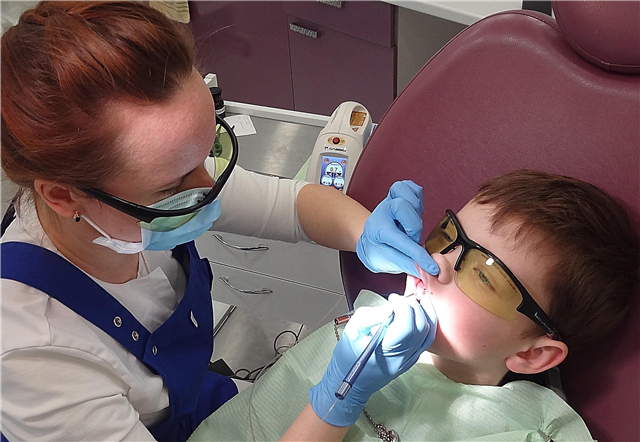When a rounded seal appears on the child's body, most often the neck, visible upon visual inspection, the parents panic. Every adult knows that an enlarged lymph node is a sign of an incipient disease. However, children's doctors reassure parents, explaining: if a child's lymph nodes are inflamed, it is necessary to look for the cause, and then draw final conclusions.

Enlarged lymph nodes in a child cause anxiety for parents
Cervical lymph nodes in the human body
Experts explain that the organs have lymph nodes: submandibular, axillary, cervical, occipital. They are part of the lymphatic system, which is part of the human circulatory system, and are located in the superficial zone of the body, they can be easily examined and felt.
Note. The role of the lymphatic system in the human body is invaluable, since it is it that belongs to anti-infectious protection, that is, the immune function. Lymph nodes are a kind of filter, where lymph is cleansed and saturated with protective antibodies.
Children's doctors explain to parents: the main support for the health of babies is precisely the cervical lymph nodes. They, in addition to the function of maturation of immune cells, perform a barrier function, preventing bacteria and viruses, allergens and toxins, and internal pathogens from entering the body.
Inflammation of the lymph nodes in the neck is quite common in children. The disease is called cervical lymphadenitis, which is dangerous because it occurs quite close to the brain. If the lymph nodes in the child's neck are swollen, on the left or on the right, this may mean: the lymph system is fighting the infection. Its main task is to prevent the penetration of infection into the brain tissue.
Note! Lymph nodes do not become inflamed for no reason. Until a certain time, this well-functioning system protects the body, but sometimes it fails, which is why inflammation is a signal for the development of some pathology.
Causes of enlarged lymph nodes in the neck of a child
Experts explain the frequent occurrence of lymphadenitis in children by the fact that the lymphatic system of the child's body reacts more sharply to all changes. At the same time, they reassure parents: the reasons why the lymph nodes on the child's neck are enlarged are most often understandable and removable.
Usually, the causative agent of the inflammatory process in infants is the ingress of an infection into the body, which, when it enters the bloodstream, spreads throughout the body and lingers in the filters-lymph nodes, so the inflammation begins with them.

In children, cervical lymphadenitis usually develops against the background of an infectious disease
Children's cervical lymphadenitis develops mainly on the basis of a nonspecific infection: streptococci, staphylococci, Pseudomonas aeruginosa and other microorganisms. In most cases, the pathogen enters the lymph nodes as a result of diseases such as tonsillitis, ARVI, tonsillitis, scarlet fever, otitis media, chickenpox. Another reason for the development of pathology can be boils.
Note! In children, the lymph nodes located in the front and back of the neck are often enlarged with inflammation of the tonsils, salivary glands, and with carious lesions of the teeth. Lymphadenitis develops in toddlers with reduced immunity, often suffering from colds.
Microorganisms can also penetrate the lymphatic tissue as a result of everyday trauma: wounds, scrapes, abrasions, cuts. The nodules can fester, then the baby will need surgical help. With such an inflammation of the cervical nodules, it is necessary to urgently consult a specialist for timely diagnosis and effective treatment.
Allergic reactions
Experts warn parents whose babies are susceptible to allergic reactions that lymph nodes can significantly increase with allergies.
Everyone knows that pathology is associated with the sensitivity of the immune system to various substances, that is, antigens. With food or household sensitivity, there is constant contact with provoking substances.
If the antigen constantly enters the body, the intensity of the inflammatory process increases, chronic lymphadenitis may occur. An increase in nodes is often manifested in the following types of allergies: urticaria, angioedema, rhinitis, bronchial asthma, atopic dermatitis.
Note! Doctors warn: the more pronounced the allergic reaction, the easier it is to see the location of the enlarged lymph nodes: they are sensitive to palpation, compacted. With recovery, the symptoms subside, and the signs of lymphadenopathy disappear.

Sometimes allergic reactions provoke inflammation of the lymph nodes
Oncological process
Rarely, inflammation of the lymph nodes is associated with malignant tumors. Doctors say that with tumors, nodes in children act as a filter. They prevent infected cells from spreading throughout the body, taking over protection, and can enlarge.
During surgery and subsequent irradiation, the affected cells are removed along with the lymph nodes. Thus, the risk of recurrence and re-formation of the tumor is reduced.
Lupus erythematosus
The main symptom of inflammation of the lymph nodes is their apparent increase, the rest of the signs depend on the cause and pathogen.
Lupus erythematosus is a rare but dangerous disease, described as a rash with a clear location on the upper part of the face, resembling a butterfly. Often the rash is accompanied by itching, so the disease can be easily confused with an ordinary allergy.
More serious psychosomatics are considered convulsions, fever, inflammation of the joints, causing unbearable pain. Often, lupus erythematosus is accompanied by an increase in lymph nodes, headache, disruption of the digestive tract.
A sharp decrease in immunity
Doctors explain that the lymph nodes are an integral part of the body's defense system - the immune system. That is why it is not surprising that “little defenders” react first to any pathology.
This is especially true for babies whose immune system has not yet formed. It is for this physiological reason that lymphadenitis in infants is more severe than in older children.
Important! Acute lymphadenitis with greatly reduced immunity and improper treatment in children can turn into purulent, which threatens with the fact that with every cold, the cervical lymph nodes will thicken.
Infectious and colds
Most often, the nodules in a child increase due to the inflammatory process with colds and viruses. There is a relationship between the size of the lymph nodes and the incidence of colds in children. Frequent swollen lymph nodes indicate poor health and a child's tendency to infectious diseases.

Colds and infectious diseases cause inflammation and swollen lymph nodes
However, experts believe that such children should not be greatly patronized, on the contrary, it is necessary to gradually temper so that their body can independently resist diseases.
Note! Inflammation of lymph nodes with different locations on the body is caused by a bacterial or viral infection in the form of tonsillitis, scarlet fever, chickenpox, otitis media, bronchitis, stomatitis.
Concomitant symptoms of inflammation of the lymph nodes
Infectious diseases, in addition to enlarged lymph nodes, are accompanied by a number of other symptoms. Therefore, doctors say that enlarged nodes are only a symptom of the disease. They are usually interspersed with the following signs of infection:
- general malaise and weakness;
- an increase in temperature;
- sore throat, ears, or mouth;
- runny nose, nasal congestion.
Diagnostic methods
Symptoms of lymphadenitis are fairly easy to recognize at home, without any medical training. To do this, you must first of all conduct a thorough examination of the child. Next, make palpation in the neck, behind the ears, under the jaw and chin, that is, in places where nodes can accumulate. During palpation, pain and discomfort may appear, while the baby cries, turns away from her mother's hands.
With lymphadenitis in a child, the submandibular, cervical nodes on the left and on the right, nodes located between the lower jaw and the ear, behind, that is, the occipital nodes, increase. They can reach the size of a pea or even an egg. If the former are not so dangerous and may appear from a recently transferred cold, the latter are obliged to alert and force you to visit a doctor.
Possible complications of cervical lymphadenitis
The disease associated with swollen lymph nodes cannot be treated at home. Cervical lymph nodes are located close to the brain, the pathological process can affect the brain and lead to meningitis. Also, neglected lymphadenitis threatens with infection in the blood, which means that sepsis may occur, the infection spreads throughout the body. In this case, the baby's life will be at risk.

Launched lymphadenitis can lead to serious complications
Dr. Komarovsky about an increase in lymph nodes in the neck
According to Dr. Komarovsky, the most common causes of cervical lymphadenitis are numerous lymphotropic viruses, which include the well-known herpes, chickenpox, and adenovirus infection.
According to Komarovsky, if the nodule is inflamed on the left or right side, you should not worry. This indicates that it is this node that is activated in the work of the immune system, as it takes on an additional load. In most cases, urgent treatment is not required. Often the inflamed lymph node returns to normal on its own, without any effort on the part of doctors.
Prohibitions
Forbidden with an increase in lymph nodes in the neck:
- To carry out thermal manipulations, any physiotherapeutic procedure, since heat promotes the reproduction of microorganisms;
- It is forbidden to lubricate the nodules with alcohol-containing solutions;
- It is undesirable to constantly feel the problem area in the child, since massaging movements can provoke a rapid increase and rupture of the node.
When you need to see a specialist
The size of the lymph nodes in the neck area, not exceeding 1 cm, is considered the norm.It is worth worrying if they increase and become more than 1.5 cm in diameter.
Residual lymphadenopathy deserves special attention. This phenomenon occurs after the baby gets sick with influenza, ARVI, or other infectious disease.
Enlarged and inflamed lymph nodes in a child's neck can persist for up to a month after recovery. In this case, it is not necessary to treat inflamed nodes. Within a month after recovery, the formations on the neck will disappear by themselves without additional therapy.
Council. However, if there is a progressive growth of lymph nodes, or there is no effect from the treatment, or the enlargement of the lymph nodes has a rare localization (for example, the supraclavicular fossa), then both the pediatrician and the parents should be concerned.

An increase in temperature with lymphadenitis is a reason to urgently consult a doctor
There are situations in which you should not hesitate with medical help:
- Lymph nodes are constantly in an enlarged state for more than a month;
- The nodes increase in several areas of the body at once;
- A child under one year old has a fever against the background of lymphadenopathy;
- The mass has redness, hot to the touch, touching the knot causes severe pain;
- The lymph nodes are connected to each other and to the surrounding tissues.
With such changes, regardless of the child's well-being, you should consult a doctor who will help determine psychosomatics and prescribe the necessary studies: blood tests, ultrasound, X-ray.
If the inflamed lymph node turns red, this may indicate suppuration. In this case, the temperature rises, the baby's condition worsens, fraught with a breakthrough of purulent contents into the internal tissues.
Recommendation. So, at the first signs of redness, Dr. Komarovsky advises to immediately consult a pediatric specialist, because purulent lymphadenitis often has to be treated surgically.
Prevention of inflammation of the lymph nodes
In order not to face such a serious disease as lymphadenitis, it is necessary to carry out preventive procedures:
- Try to avoid injury near knots;
- Avoid infection of injured skin areas;
- Timely treat chronic diseases;
- Identify and treat colds in time;
- Visit the dentist regularly with your child;
- Observe the rules of children's hygiene;
- Prevent purulent processes on the skin and treat any damage with antiseptic preparations;
- To maintain immunity, it is recommended that children under one year old include more foods enriched with vitamin C in their diet, and temper them.
If you suspect a baby has lymphadenitis, you should consult a doctor who will make an accurate diagnosis and prescribe the correct treatment. Independent home treatment is unacceptable, since home-grown therapy can lead to the development of serious consequences: meningitis or sepsis.



